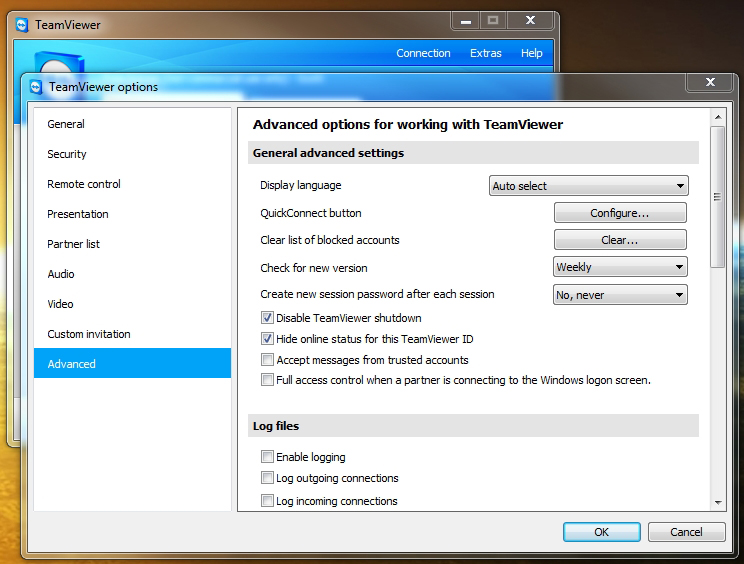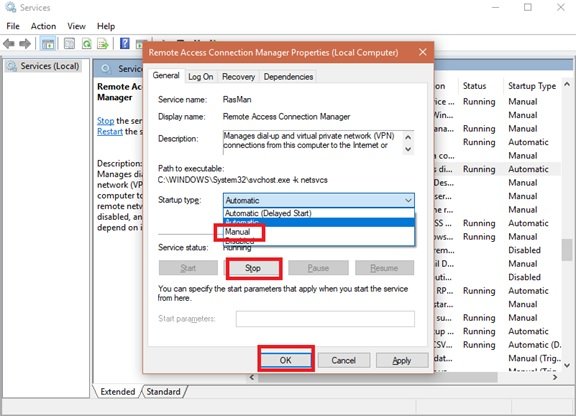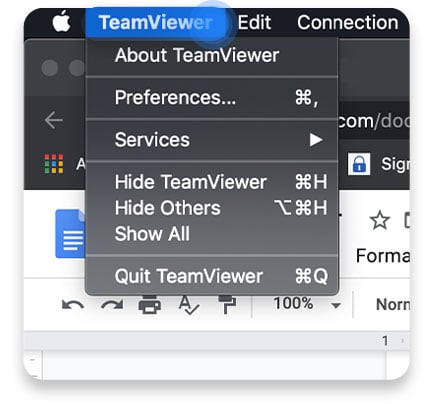

This will allow anyone with a user account on the local machine (or admins only) to log into the machine without needing to know the session or unattended password or temporary session password. If the remote machine is running windows you will have an extra option for Windows logon. When you give someone full access, they literally have access to not only control your computer remotely, but they also have control to browse your hard drive remotely and send you files. You should also set up your access control if you don’t trust the people that you will be sharing your screen with. This will allow you to connect back to your computer even when no one is there to provide the session password. If you are setting up your own personal computer that you want access to from anywhere, then click on the security options and put in a password for unattended access. Instead they can just know your TeamViewer username and connect using that. This will allow others to remotely connect to your computer without needing to know the 9 digit ID number.

This is super helpful if you are not at your computer and need to provide support to someone.Īfter you have your online account set up you can then go into the full version options and set up your username, email, and password in the options. Firewalls, antivirus were temporary disabled while i did tests.Once your account is set up, you can then log in to the TeamViewer homepage and access all your partners or establish a quick connection without needing any software installed. I can also ping succesfully from the remote pc_1 to the remote pc_2, but when i try to ping from local pc to remote pc_2 - all packets are lost. Minimum = 107ms, Maximum = 238ms, Average = 144ms Packets: Sent = 4, Received = 4, Lost = 0 (0% loss),Īpproximate round trip times in milli-seconds: Now from the local pc i can ping to the address 192.168.2.100: Network Destination Netmask Gateway Interface Metricġ92.168.6.0 255.255.255.0 (remote vpn ip) (local vpn ip) 56 Route was added successfully, i have route in the route table: Route add 192.168.2.0 MASK 255.255.255.0 (ip of the teamviewer vpn of the remote pc) On the local pc i have added a route to the route table: I have installed teamviewer on local pc and remote pc_1 and a vpn adapters of the teamviewer and established vpn connection betwean local pc and remote pc_1. Windows ip configuration shows as follow: On the local pc and remote pc_1 i have enabled routing in the registry. I would like to access remote pc_2 via remote pc_1.

Route to the remote station with win route table


 0 kommentar(er)
0 kommentar(er)
